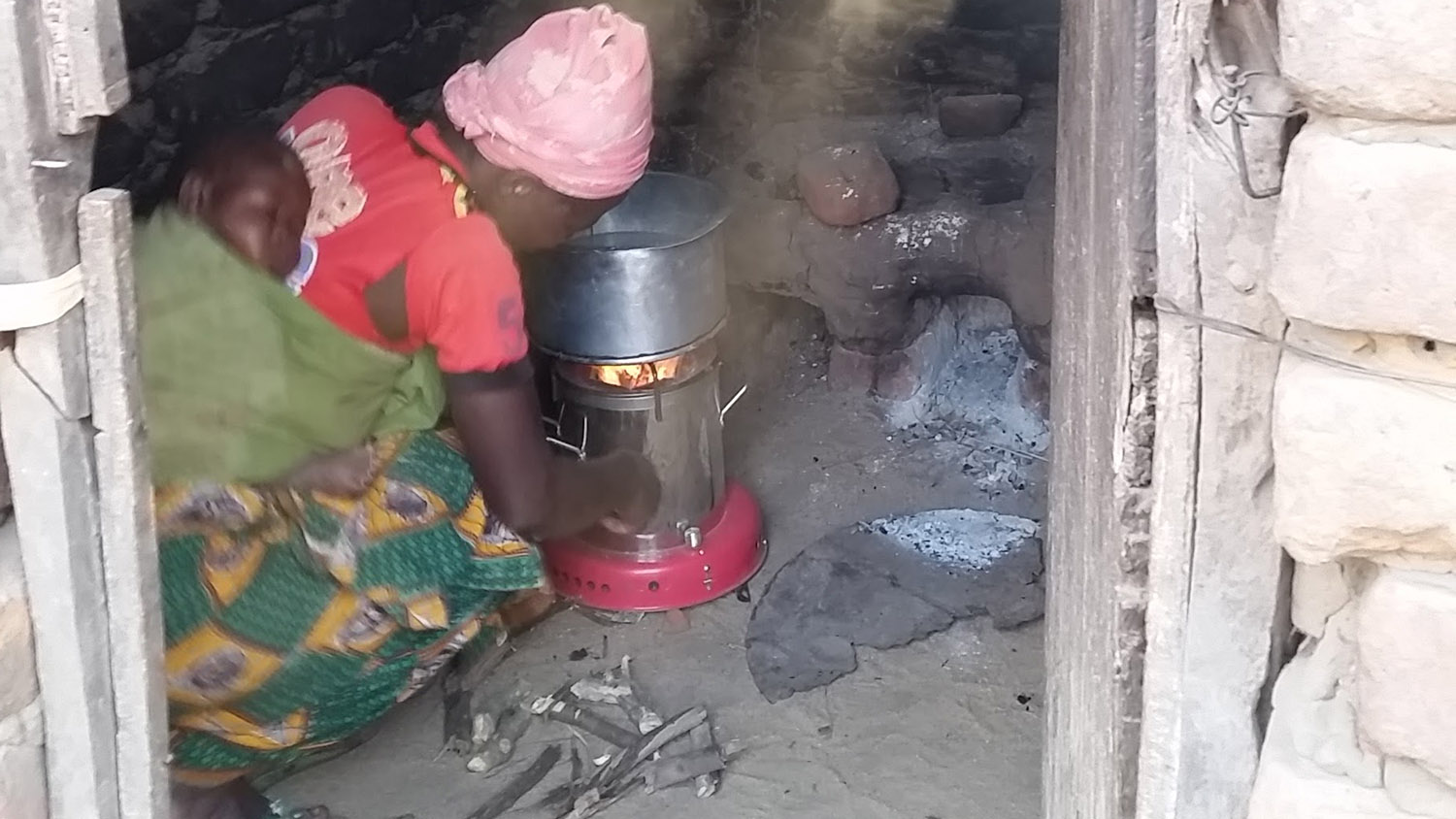Advanced Biomass Cookstoves Provide Benefits in Field Settings, But Less than Expected from Lab Testing

For Immediate Release
Researchers from North Carolina State University and the Liverpool School of Tropical Medicine have found that while advanced wood-burning cookstoves can provide benefits to the environment and climate, these benefits are less than expected due to higher emissions measured in the field compared to laboratory settings. The study, conducted in rural Malawi, found that pollutant emissions from these stoves were much higher than was reported in laboratory testing, due in part to how the stoves were being used.
Despite these differences, the cleaner-burning forced-draft stoves tested reduced fine particulate matter emissions per amount of wood burned by 45 percent, and reduced carbon monoxide emissions per amount of wood burned by 47 percent, compared to traditional open fires. In addition, because the forced-draft stoves used less wood, they actually reduced particulate matter emissions by approximately 75 percent.
“However, the field measurements of the forced-draft stoves were still almost 10 times higher than the emissions we see from the same stoves when they are tested under controlled, laboratory conditions,” says Andrew Grieshop, an assistant professor of civil, construction and environmental engineering at NC State and corresponding author of a paper describing the work. “This highlights the importance of doing field measurements rather than relying solely on laboratory testing.”
There’s interest in promoting the use of forced-draft, wood-burning cookstoves in the developing world because wood-burning stoves emit black carbon particles and other pollutants that can contribute to both human health problems and global climate change.
“The idea is that these forced-draft stoves, which use battery powered fans to improve combustion, are more efficient than other wood-burning technologies and could significantly reduce pollutant emissions, but there’s been little work to measure those emissions in a real-world setting,” Grieshop explains. “Our study finds that emissions are significantly reduced, but the reductions are not as pronounced as was expected based on lab testing of the technology.”
Grieshop and his graduate student, Roshan Wathore, used mobile emission measurement instruments that they developed to measure emissions from four types of wood-burning technology in 22 households in rural Malawi. The wood-burning technologies were traditional open fires, clay stoves called Chitetezo Mbaula, and two types of forced-draft stoves.
These findings may also help to explain the results of the recent “Cooking and Pneumonia Study,” which found no effect on childhood pneumonia from providing households with the same forced-draft stoves tested here. One reason for the discrepancy between emission measurements from the field and those from the lab is likely the fact that, in the field, the stoves are often not used in strict accordance with operation guidelines.
“Many households relied on large pieces of wood, such as pieces of logs or tree limbs, that didn’t fit into the stoves as neatly as the small pieces of wood called for by the manufacturers and used for laboratory testing,” Grieshop says. “That’s likely because it takes a lot of work for villagers to chop the wood down to optimal size, and that’s something they may not always have the wherewithal to do.”
Other potential factors include the quality or type of wood available, or the possibility that the patterns of stove use activity in lab testing don’t accurately mimic real-world use.
“This study sheds more light on the complicated challenge of helping people in the developing world reduce their health risks while still enabling them to meet their household energy needs,” Grieshop says. “Having everyone switch to clean technology, like natural gas, would be ideal – but there are a host of practical challenges to implementing that solution on a global scale.
“While we work toward that larger goal, it makes sense to continue research that can help us develop wood-burning technology that can reduce emissions and negative impacts. This will likely involve research that studies the larger system, including the technology, fuel and user.”
The paper, “In-use emissions and estimated impacts of traditional, natural- and forced-draft cookstoves in rural Malawi,” is published in the journal Environmental Science and Technology. Wathore is lead author of the paper, which was co-authored by Dr. Kevin Mortimer of the Liverpool School of Tropical Medicine.
-shipman-
Note to Editors: The study abstract follows.
“In-use emissions and estimated impacts of traditional, natural- and forced-draft cookstoves in rural Malawi”
Authors: Roshan Wathore and Andrew P. Grieshop, North Carolina State University; Kevin Mortimer, Liverpool School of Tropical Medicine
Published: online Jan. 6, Environmental Science and Technology
DOI: 10.1021/acs.est.6b05557
Abstract: Emissions from traditional cooking practices in low- and middle-income countries have detrimental health and climate effects; cleaner-burning cookstoves may provide “co-benefits”. Here we assess this potential via in-home measurements of fuel-use and emissions and real-time optical properties of pollutants from traditional and alternative cookstoves in rural Malawi. Alternative cookstove models were distributed by existing initiatives and include a low-cost ceramic model, two forced-draft cookstoves (FDCS; Philips™ HD4012LS and ACE-1), and several institutional cookstoves. Among household cookstoves, emission factors (EF; g (kg wood)-1) were lowest for the Philips, with statistically-significant reductions relative to baseline of 45% and 47% for fine particulate matter (PM2.5) and carbon monoxide (CO), respectively. The Philips was the only cookstove tested that showed significant reductions in elemental carbon (EC) emission rate. Estimated health and climate co-benefits of alternative cookstoves were smaller than predicted from laboratory tests due to the effects of real-world conditions including fuel variability and non-ideal operation. For example, estimated daily PM intake and field-measurement-based global warming commitment (GWC) for the Philips FDCS were a factor of 8.6 and 2.8 times higher, respectively, than those based on lab measurements. In-field measurements provide an assessment of alternative cookstoves under real-world conditions and as such likely provide more realistic estimates of their potential health and climate benefits than laboratory tests.
- Categories:


